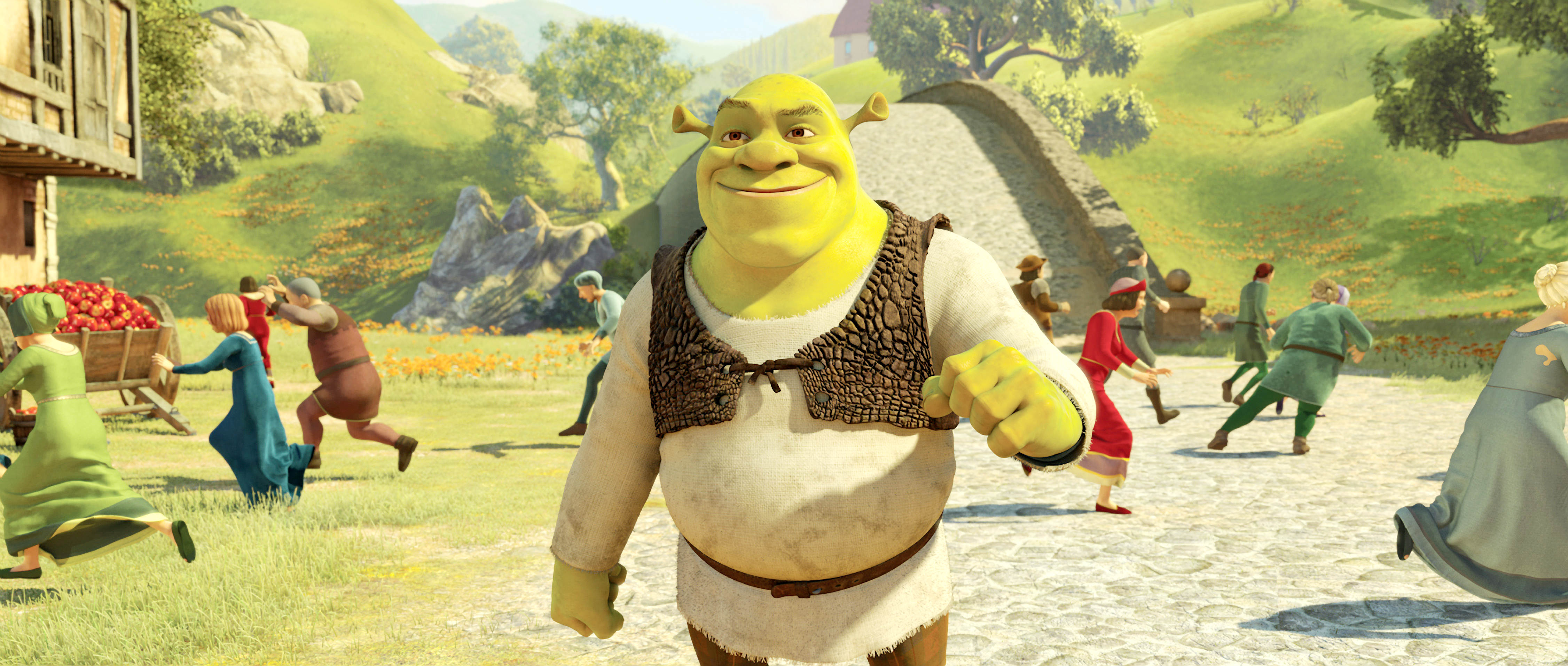EYE LEVEL
This angle is the most common view because it is the real life angle that humans are all used to. The desired effect is to show the subject how we would see them in real life so it is a fairly neutral shot, the shot could be used to look right into a characters eye hence we can see more emotions.
HIGH ANGLE

A high angle shot shows the subject from above so the camera is angled down, the desired effect of this angle is to often diminish the subject so they look smaller, insignificant or submissive. In this image the high angle is coupled with an over the shoulder shot to make Remy the rat from the film Ratatouille look insignificant to his father; like he is in trouble.
LOW ANGLE
A low angle shot shows the subject from below, so the camera is tilted upwards to look at the subject. It is often used to make the subject look bigger or taller so they seem more dominant, important, intimidating or in control. This image is from the same scene as above from the film Ratatouille where Remy is looking up at his father, this gives his father greater presence in the scene hence He is important.
CANTED/TILTED
This angle is also known as a Dutch Tilt (used a lot in German films of the 1930/40s), where the camera angle is deliberately slanted to one side, this is used for dramatic effect to show unease, desperate action or madness. It can be combined with panning or zooming for an interesting effect on the audience.
moving the camera lens up or down while keeping its horizontal axis constant, tilting is less common than panning as humans look horizontally more than vertically. It could be used to create suspense.
ZOOM
A ZOOM is the change of the focal lens to make the subject/object
look closer, it is a smooth movement from long shot to close up. This could be used to put emphasis on something like a facial expression.
A ZOOM is the change of the focal lens to make the subject/object
look closer, it is a smooth movement from long shot to close up. This could be used to put emphasis on something like a facial expression.
REVERSE ZOOM
This is the opposite of zoom where the focal lens goes from a close up to a long shot, this could be used to make a character seem less important or most commonly to portray a character In relation to its surroundings.
Panning is where the camera horizontally sweeps across the scene it could be used to show motion, as a panoramic effect or to build suspense. It can often be combined with a zoom or reverse zoom so put emphasis on a subject. I always remember panning from this image of the BBC1 comedy MIRANDA where the episode in question was called 'it was panning'.


























